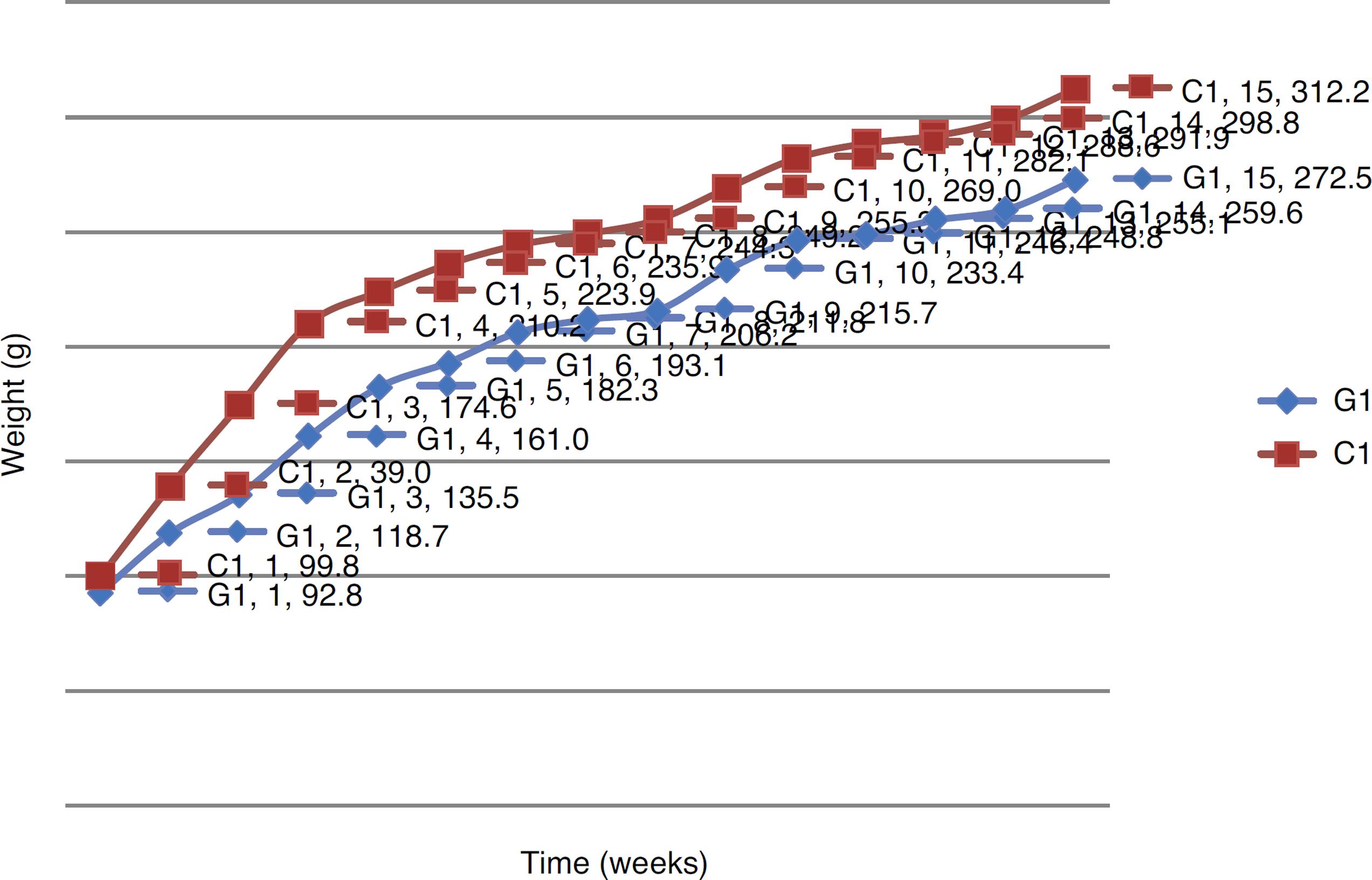The induced colorectal carcinogenesis in rodents has a long history and currently uses the substances 1,2-dimethylhydrazine and azoxymethane.
Objective:
The aim of this study was to compare the inductive effect of the substances azoxymethane and 1,2-dimethylhydrazine in colorectal carcinogenesis.
Method:
30 randomly chosen male Wistar rats were divided into four groups. G1 group was treated with 1,2-dimethylhydrazine and C1 was its control group; G2 group was treated azoxymethane and C2 was its control group. The animals were weekly weighed until euthanasia, when their intestines were removed, processed and analyzed by an experienced pathologist.
Results:
Among the control groups (C1 and C2) no histologic changes were observed; moderate dysplasia was detected in G2 group; hyperplasia, mild dysplasia, severe dysplasia and carcinoma were observed in G1 group. When this study compared the cost of the substances, 1,2-dimethylhydrazine was more than 50 times less expensive than azoxymethane.
Conclusion:
Azoxymethane is able to promote histological changes consistent with colorectal carcinogenesis. 1,2-Dimethylhydrazine produced neoplasia and dysplasia, and, compared to the azoxymethane, was more efficient in the induction of colorectal cancer.
Colorectal cancer; Experimental model; Carcinogenesis; Azoxymethane; 1,2-Dimethylhydrazine








